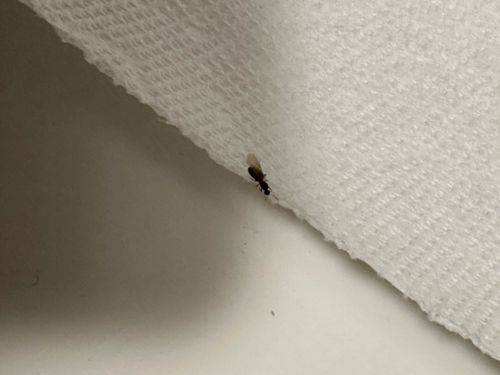Flying Ant
Scientific Name: Varies widely by species (e.g., Lasius niger for common black garden ant, Camponotus species for carpenter ants). Without a clearer image, precise identification is not possible.
Order & Family: Hymenoptera, Formicidae
Size: Typically 3mm to 15mm, depending on the species and whether it's a male or queen.

Natural Habitat
Flying ants can be found almost anywhere there are ant colonies, which live underground, in wood, or within structures. The winged forms are most often seen outdoors during their mating flights, but can also enter homes.
Diet & Feeding
Ants have varied diets depending on the species. They can be omnivores, scavengers, or predators, feeding on sweets, lipids, proteins, other insects (live or dead), or plant secretions like honeydew.
Behavior Patterns
Flying ants are typically reproductive males or virgin queens. They emerge from their nests for a mating flight, often in large swarms. After mating, males die, and fertilized queens seek a new location to establish a new colony, often shedding their wings.
Risks & Benefits
Risks: While generally harmless, a large number of flying ants indoors can be a nuisance and may indicate a mature colony nearby, potentially within the structure. Some species, like carpenter ants, can cause structural damage to wood. Some ants can bite if threatened. Benefits: Ants play important ecological roles, including soil aeration, seed dispersal, predation on other insects, and decomposition.
Identified on: 8/9/2025